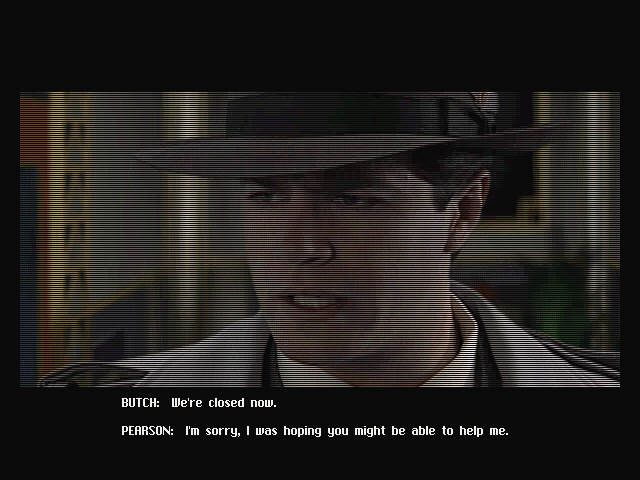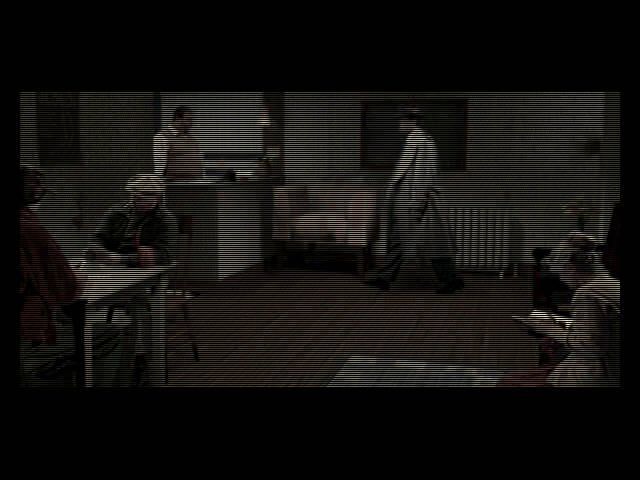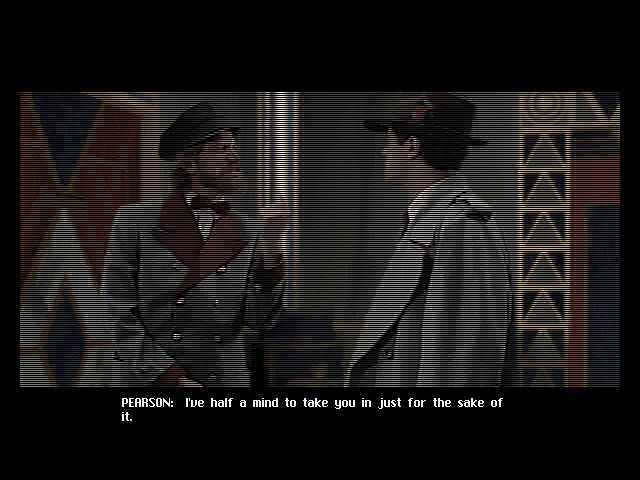Retro Replay Review
Gameplay
Black Dahlia embraces the classic point-and-click adventure formula while introducing a solid puzzle-focused structure. Players take on the role of Jim Pearson, a rookie government agent navigating a world of 1940s intrigue, occult rituals, and Nazi conspiracies. The game’s control scheme is intuitive: click to move, interact, and examine objects, with a dynamic cursor that adapts to the environment.
(HEY YOU!! We hope you enjoy! We try not to run ads. So basically, this is a very expensive hobby running this site. Please consider joining us for updates, forums, and more. Network w/ us to make some cash or friends while retro gaming, and you can win some free retro games for posting. Okay, carry on 👍)
The heart of the gameplay lies in its variety of over sixty puzzles, ranging from jigsaw assemblages and code-breaking to mazes and object manipulation. Difficulty levels fluctuate throughout, ensuring that both casual adventurers and completionists will find challenges to match their skill. For those moments when you’re truly stumped, well-publicized bypass codes let you auto-solve puzzles without penalizing progress, as there is no scoring system to worry about.
Exploration is made richer by full 360-degree horizontal panning and limited vertical sweeps, allowing you to meticulously scour each scene for hidden clues. Jim’s in-game notebook automatically logs examined items, conversations, and discovered evidence, keeping the investigation coherent and preventing frustrating backtracking. This journal feature is indispensable for piecing together leads and making sense of the narrative’s twists.
Live-action cutscenes punctuate the gameplay, offering cinematic flair and deepening immersion. While the transition between FMV and static backgrounds can sometimes feel jarring, the narrative momentum they provide compensates by heightening tension during key revelations. Overall, the gameplay loop balances story-driven exploration with intellectually stimulating puzzles, making for a compelling detective experience.
Graphics
Visually, Black Dahlia captures the gritty yet glamorous essence of 1940s California. Static backgrounds are richly detailed, with period-appropriate architecture, vintage automobiles, and smoky noir-inspired interiors. The color palette leans toward muted sepia tones, which accentuates the game’s dark and suspenseful mood.
Live-action sequences feature actors in full costume, replete with era-accurate attire and props. While the resolution of FMV clips may appear dated by modern standards, the performances are earnest and add genuine emotional weight to key story beats. Facial expressions and body language often convey subtleties that text alone could not achieve.
The integration of 3D objects—such as rotating artifacts, animated puzzle elements, and interactive hotspots—works seamlessly against the pre-rendered backgrounds. Occasional clipping or pixelation occurs when panning quickly, but these minor technical hiccups rarely break immersion. Overall, the game’s graphical presentation is polished for its time and lends authenticity to the narrative.
Environmental audio design further enhances the visuals; ambient sounds like distant sirens, dripping water, and hushed whispers reinforce the oppressive atmosphere. Coupled with moody lighting effects, the result is a world that feels both lived-in and haunted by unseen horrors.
Story
Black Dahlia weaves a layered narrative inspired by the true-life unsolved murder of Elizabeth Short, the “Black Dahlia.” While the game takes creative liberties—introducing Nazi occultism and supernatural artifacts—it remains grounded by its historical backdrop. This fusion of fact and fiction keeps players constantly guessing about the boundaries between reality and the paranormal.
The journey begins with Jim Pearson assigned to investigate Nazi propaganda, but it swiftly evolves into a race against time. When he encounters Elizabeth Short, she reveals the existence of an engraved stone called the Black Dahlia—a relic coveted by Nazi operatives seeking ultimate power. Shortly after, her gruesome death sets Jim on a treacherous path through corruption, deceit, and ritualistic crime.
Story pacing is deliberate, alternating between methodical clue-gathering and high-stakes revelations. Dialogues are well-written, peppered with period slang and investigative jargon that immerses you in the era. Key characters, from shady informants to mysterious cultists, are distinct and memorable, ensuring the plot never feels one-note.
Plot twists arrive at regular intervals, each building on previously uncovered evidence to deepen the conspiracy. The supernatural elements are handled with restraint, never overwhelming the detective framework but rather amplifying the sense of dread. By the finale, players will feel they have truly unraveled a complex web of evil, even if the ending leaves certain questions tantalizingly open.
Overall Experience
Black Dahlia stands as a standout title for fans of classic adventure games. Its blend of historical intrigue, occult mystery, and challenging puzzles creates a unique detective thriller that remains engaging from start to finish. The absence of a scoring system ensures that exploration and story progression take precedence over point accumulation.
While some technical aspects—such as FMV quality and occasional clipping—show their age, the game’s strengths far outweigh these minor flaws. The notebook mechanic, diverse puzzle design, and rich narrative all contribute to an experience that feels both substantial and rewarding. Newcomers to the genre will appreciate the guided progression, while veterans will enjoy the layered complexity.
The atmospheric graphics, compelling live-action sequences, and haunting musical cues combine to deliver a truly immersive trip into 1940s Los Angeles. If you relish atmospheric storytelling, cerebral challenges, and a dash of the supernatural, Black Dahlia is well worth adding to your collection.
In summary, Black Dahlia offers an engrossing blend of detective work, occult suspense, and period drama. It’s a must-play for anyone seeking a thoughtfully crafted point-and-click adventure with enough twists and turns to keep you invested until the very last frame.
 Retro Replay Retro Replay gaming reviews, news, emulation, geek stuff and more!
Retro Replay Retro Replay gaming reviews, news, emulation, geek stuff and more!









Reviews
There are no reviews yet.